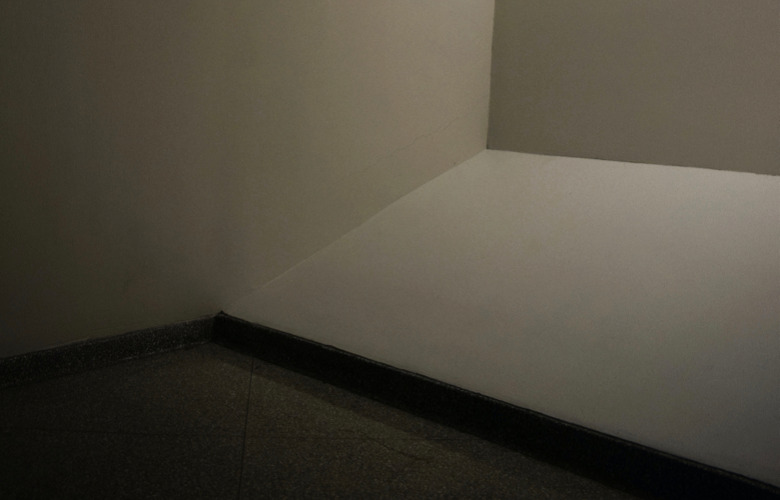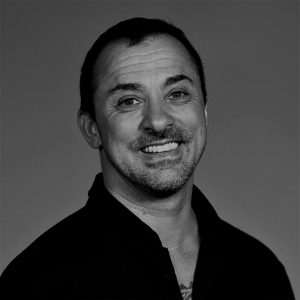
Many years ago, when I studied at the University of the Arts in Zurich, Switzerland, I had the privilege to attend a lecture by Robert Wilson. We were only a small group. This enabled us to ask many questions and interact with a man whom we all deeply admired as an exceptional avant-garde director, designer, performer, and writer. Robert Wilson, the master of experimental theater. Wilson took his time when he shared his life story and artistic ideology with us. These were four hours of my life I will never forget.
Robert Wilson was born in Waco, Texas, in 1941.
He studied Business Administration in Texas, then moved to New York in 1963 where he studied architecture and became ever more interested in the visual and performing arts.
He questions all of the presumed essential elements of theater: the spectator, the performer, the writer, the stage, the story. Many of his plays are unusually long, yet highly controlled, minimalist yet incredibly detailed.
“I never studied theater,” he admits. “If I had studied theater, I would not be making the theater I’m making.”
Growing up, Wilson did not have many chances to expose himself to art. The only person who introduced a more artistic side of life to him was a dance instructor. She was a ballet dancer and her teachings were – and remain to this day – an important influence in Wilson’s work.
“Byrd Hoffman was in her Seventies when I first met her. She taught me dance and she understood the body in a remarkable way. She talked to me about the energy in my body. About relaxing. About letting my energy flow through.”
“She was amazing because she never taught a technique. She never gave me a way to approach it. It was more that she helped me to discover my body and dance on my own.”
Whilst teaching expression through dance, Byrd Hoffman also helped the young Robert Wilson with his verbal expression. With her help, he overcame his stutter.
In 1968, Wilson founded an experimental performance company, the Byrd Hoffman School of Byrds, in honor of his teacher.
With this company he directed his first major works, beginning in 1969 with The King of Spain and The Life of Sigmund Freud.
Following Einstein, Wilson worked increasingly with major European theaters and opera houses.
For the New York debut of his first opera, the Metropolitan Opera allowed Wilson to rent the house on a Sunday, when they did not have any other productions playing. Yet, they would not produce his work.
However, this did not slow down his ever-growing success. Nor did it ever slow down his intellectual, highly analytical yet at the same time highly creative productions. Robert Wilson continuously questioned his own approach to the performing arts as much as he questioned the traditional approach.
I will never forget seeing his eyes sparkle during his lecture, when he described a specific scene to us art students (who were worshipping the ground he walked on). In said scene, one actor would stand completely still. Over the course of four hours only his little finger would slowly move from being extended to re-aligning itself with the other fingers.
The Life and Times of Joseph Stalin was a twelve-hour performance. Other examples of Robert Wilson’s unusually long productions are KA MOUNTain and GUARDenia Terrace. Both were staged on a mountaintop in Iran and lasted seven days.
Wilson has always believed that the more structurally, procedurally, emotionally, and visually controlled a theatrical situation is, the more space there is for real truth – not represented truth – to crystallize in the openness that remains.
“I prefer formalism in presenting a work, because it creates more distance, more mental space.”
Robert Wilson continues, “Often I feel that what I’m seeing onstage is based on a lie.” “You know, an actor thinks he’s being natural but he’s not. He is acting natural and that is something that is artificial.”
“By being consciously artificial, however, I think you can know more about yourself. You can be closer to a form of truth.”
Beyond directing his performers’ movements to a precise and often slow pace, Wilson also exerts equal control over the spoken word. He instructs his actors to speak in regulated monotones. Not robotic, yet not dynamic either.
Wilson further pays attention to every single detail on stage. The design of set pieces is something he often enjoys delving into himself.
In the words of lighting designer Beverly Emmons, who has often worked with Wilson, “What Bob does with light, which is extraordinary, difficult and unusual, is to separate all the elements from each other and control them independently.”
“He wants the floor treated as a whole unit. And separately painted with light. He wants the background treated as another whole. With maybe one color shaded into another. Then, he wants a human figure separately etched out with light. And, very often, he wants the head or even nose of that figure separately lighted.”
Over time, Robert Wilson began to diversify the works upon which he applied his formal structure.
According to Stanford University scholars, a striking feature of all of Wilson’s later works is the fact that even though he adapts the original text and score to his own aesthetic, the result is again and again a production that remains true to the original artist’s earliest concepts.
Director Ann-Christin Rommen, who has collaborated with Wilson several times, says, “Bob will always try to keep the spoken word as open-minded and inexpressive as possible. He doesn’t want the actors to express the meaning too much. He wants them to leave it open for the audiences to experience. To hear it for themselves and make up their own minds.”
His next production, Messiah, was planned for 2020. Hopefully we will get to enjoy it in 2021 instead.
Unless this article be the length of a book, it can come nowhere near to describing the incredible legacy Robert Wilson has left us (thus far) in its entirety. However, I hope to have piqued your interest, as there are a myriad of publications about his work.
To conclude this short attempt at a biography with one more comment by the great master himself:
“My theater is, in some ways, really closer to animal behavior: When a dog stalks a bird his whole body is listening… He’s not listening with his ears, with his head; it’s the whole body. The eyes are listening.”
Robert Wilson on his approach to theater. Lecture at the Canadian Opera Company:
Robert Wilson Interview: Richard Strange’s A Mighty Big If:
Robert Wilson Official Website
This article is based on: Stanford Presidential Lectures in the Humanities and Arts – Robert Wilson https://prelectur.stanford.edu/lecturers/wilson/
Thomas Schunke – Portrait of a Performance Artist
Guilherme Botelho – Dance and the Quest for Meaning


Liam Klenk was born in Central Europe and has since lived on four continents. Liam has always been engaged in creative pursuits, ranging from photography and graphic design, to writing short stories and poetry, to working in theatre and shows. In 2016, Liam published his first book and memoir, 'Paralian'.
Read Full Profile© 2021 TheatreArtLife. All rights reserved.

Thank you so much for reading, but you have now reached your free article limit for this month.
Our contributors are currently writing more articles for you to enjoy.
To keep reading, all you have to do is become a subscriber and then you can read unlimited articles anytime.
Your investment will help us continue to ignite connections across the globe in live entertainment and build this community for industry professionals.